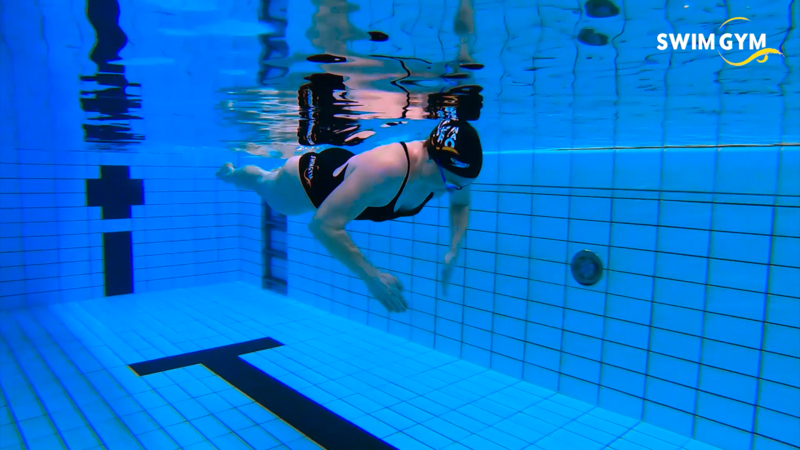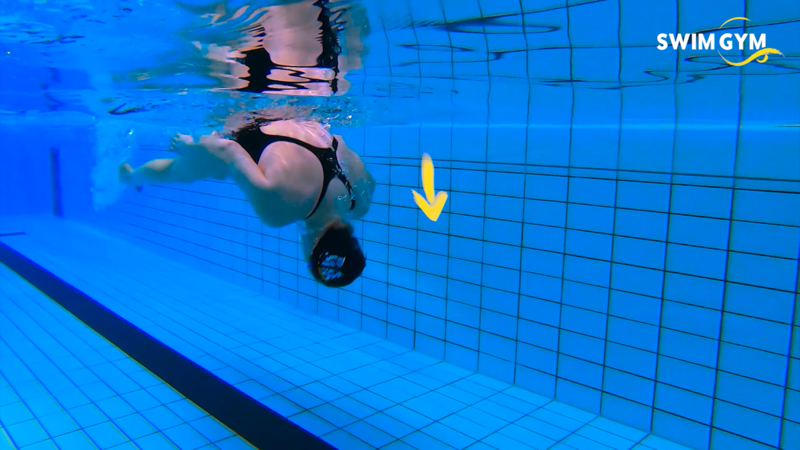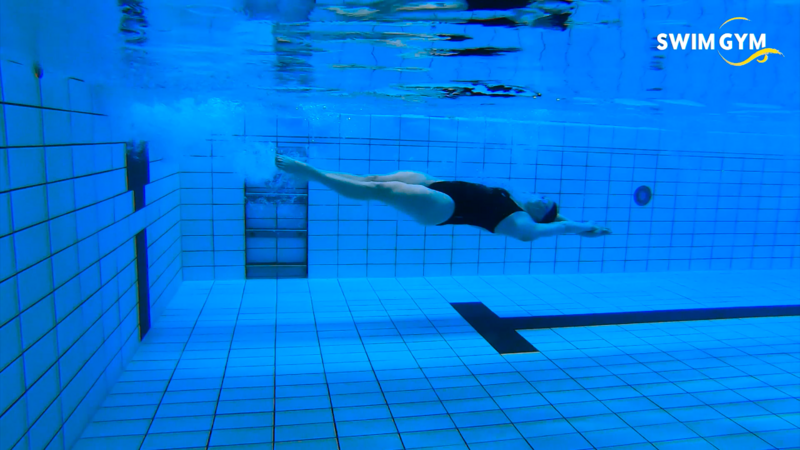Swimming blog - FLIP TURNS How to correct these 5 common flipturn mistakes?
Do flipturns make you a better swimmer? Yes, they do. But what are common mistakes we see from swimmers trying to master the flipturn? How do you avoid making these mistakes and improve your flipturn? Read on and let’s find out.
Mistake #1 Lifting your head out of the water before flipping
You don’t want to lift your head just before initiating the flip turn. We see a lot of swimmers do this. Maybe you want to see the wall coming or take a last breath, yet lifting the head at the last moment before flipping will hamper your flipping and make it very difficult to throw your legs over your head as your body is moving in the opposite direction. You want to keep your upper body on the water surface, head in a neutral position ready to flip.
You want to continue moving in the direction of the turn, forwards and down.

Mistake #2 Curling up into a ball
Curling up into a ball will sink you to the bottom. Curling up removes a good chunk of your surface area in the water and makes you heavier. This means that instead of flipping towards the wall, you have sunk before you get there. Sinking is the number one issue that ruins a good turn.
Also curling into a ball and sinking means we are too far from the wall to place our feet and if we do get to place them somehow, our push off from the wall folds us in. Add water up your nose and any attempt at flipping will be consistently ruined.
What can you do to rectify this? Keep reading.
At SwimGym.com we show the flipturn in slow motion, allowing you to get a good look at it. Here you will see our elite swimmers start the flip turn by bowing in the water. The upper torso bends at the waist and the hands remain still. The bowing allows the legs to remain relatively straight, keeping us nicely on the water surface, something which prevents the sinking explained in the previous common mistake.
Bowing also allows us to flip straight towards the wall, important when fixing the next mistake. Bowing provides a lever for the legs to be thrown over the body towards the wall and with momentum. This momentum will help keep the speed in the turn, which is what it is all about.
Lastly, not bowing encourages the hands to flap around under water. We want to see the hands stay still next to the body. Still hands mean that once the flip has been done, our hands are above our heads and ready to go into streamline position. Perfect!

Mistake #3 Turning your body before placing your feet
Turning your body before placing your feet on the wall is another common mistake. Flip turns can be disorientating, and swimmers often want to be positioned in the “right way” before they push off. Swimmers are then seen making elaborate circles and movements before their feet have even reached the wall. These movements are difficult to control, even for a good swimmer. Most often you have turned your body and feet away from the wall and be nowhere near it.
The coach’s tip is to flip and place your feet on the wall first, then make a quarter turn ready to push off. The quarter turn helps prevent getting water up the nose. Another option for more advanced swimmers is to push off on your back and turn back to your stomach while in streamline.

Mistake #4 Pushing off in the opposite direction to feet placement
You manage to place your feet and do a quarter turn to the left, well done! But instead of pushing off on your left side, you try and push off on your right side. Counter directional to your feet. This will not work. All your core tension disappears. The push off will be awkward and nigh impossible.
Coach’s tip is to push off on the side you turn to once the feet are placed.

Mistake #5 Holding your breath
Holding your breath while flip turning only means that you get water up your nose. As you start to bow, exhale a little through your nose (should feel like 'humming'). This will prevent water going up your nose, a very common issue with swimmers learning to flip turn. However, you don't want to empty your lungs exhaling, keep the majority of your air inside your lungs so you're not feeling out of breath after each turn. It takes practice, so take your time.
If you find that you can’t master exhaling while flip turning, use a nose clip. This will allow you to focus on the turn mechanics and once you have mastered the turn, then you can start working on your exhaling while doing the flip turn.
.png)
Finally - See it as a progression
We see a lot of swimmers trying to do everything at once. The flip turn is a progression in movement. First one thing happens before the next and so on. At SwimGym.com we have video tutorials for you outlining every stage of the flip turn and drills to practice it. The videos show what this progression looks like and are easy to do in the water.
We have no doubt you will be flip turning like a pro in no time.
Written by Michael Stolt